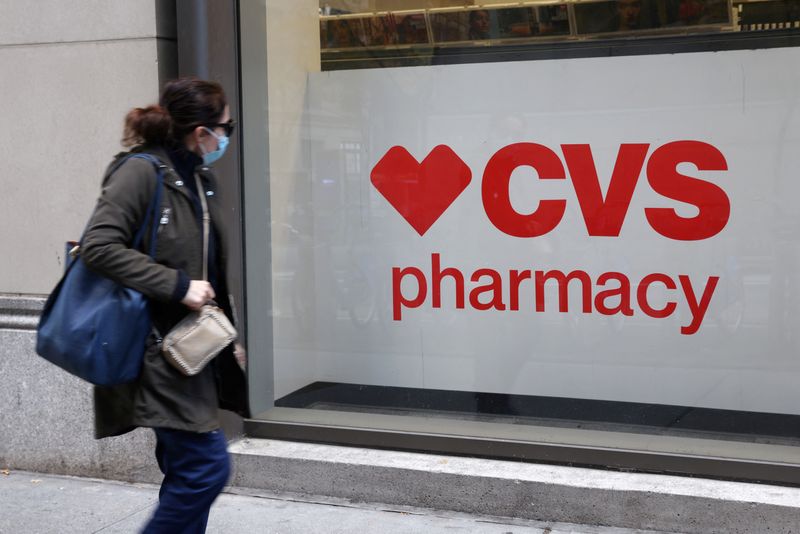By Leroy Leo
(Reuters) -Some employees at CVS Health Corp (NYSE:CVS) and Walgreens Boots Alliance (NASDAQ:WBA)'s U.S. pharmacies launched a three-day walkout starting Monday to push the companies to improve working conditions and add more staff to their stores.
The walkout, which has been dubbed "Pharmageddon" on social media platforms such as Meta's Facebook (NASDAQ:META) where it was largely planned, started on Monday and led to the closing of some stores in New York City, two organizers told Reuters.
Shane Jerominski, a former Walgreens pharmacist and one of the organizers of the walkout, told Reuters that as many as 5,000 pharmacy workers would walk out across the three days, but said that the exact number of affected stores and participating staff was not clear due to the lack of a union.
He pointed to "grossly understaffed" stores where employees have to fill not only prescriptions but also look at appointments and walk-ins for immunization as one of the triggers for the action.
In September, some staff from CVS stores in Kansas City went on a two-day strike, while there was another by Walgreens store employees earlier this month.
Pharmacy staff in New York and Pennsylvania were planning to participate, including workers at some of Walgreens' Duane Reade stores in New York, he said.
Some pharmacists were also planning to conduct rallies outside CVS' headquarters at Woonsocket, Rhode Island and at Walgreens at Deerfield, Illinois, according to social media posts.
Jerominski said the organizers were also seeking better pay and more consistent hours for technicians, who locate, dispense, pack, and label prescribed medication for patients under the supervision of pharmacists.
In a bid to cut costs post a consolidation in the pharmacy industry, large companies have not employed enough pharmacists and technicians at the stores, leaving the staff overburdened, said John August, director of healthcare labor relations at Cornell University.
"The pandemic just caused so much additional work and stress that the turnover rates (of staff), which were already very high, just became extremely epidemic," he said.
The walkout is a sign of a new labor movement where people are organizing on their own without a union, August said, adding that such walkouts, even though legal, are risky because the staff "don't really have a traditional union to back them up in their strike."
A spokesperson for CVS said its leaders were connected with their pharmacists to directly address concerns and engaged in a "continuous two-way dialogue," while Walgreens said it has taken steps to help its pharmacy teams "concentrate on providing optimal patient care".
"Our ongoing efforts are focused on how we recruit, retain, and reward our pharmacy staff," a spokesperson for Walgreens told Reuters, adding that they have also centralized some operations to reduce pharmacists' workload.

The company earlier this month said it opened its 11th micro fulfillment center, which are centralized units that fill prescriptions, allowing its "staff to spend more time with customers" to offer other health-related products and services.
The walkouts are part of the larger trend of labor unrest in several industries, including strikes by autoworkers, writers and actors, as well as the largest recorded medical worker walkout by employees of Kaiser Permanente earlier this month.